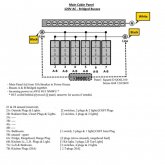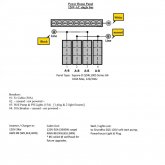SO I'm nearly finished with my PV system. I'll have charged batteries tied to an OFFGrid Inverter. Here is my question: I have 1 circuit that I want to power when the grid goes down. Can I jsut trip that circuit once the power is off, and plug the out jack of the inverter to an open wall socket of that circuit? Then, when power is restored, I disconnect the inverter and turn the circuit back on? Any issues with this? I'm trying to figure out how to connect the two female outlets in this scenario.
It shouldn't matter for this question, but I have a 5400kW Legion3 Solar system with 36 12V (paired into 18 24V) batteries. Each set of 8 12v batteries aggregates through a Legion3 Off Grid Commander and is able to connect to a single OffGrid Inverter.
Thanks!
It shouldn't matter for this question, but I have a 5400kW Legion3 Solar system with 36 12V (paired into 18 24V) batteries. Each set of 8 12v batteries aggregates through a Legion3 Off Grid Commander and is able to connect to a single OffGrid Inverter.
Thanks!
Last edited:






